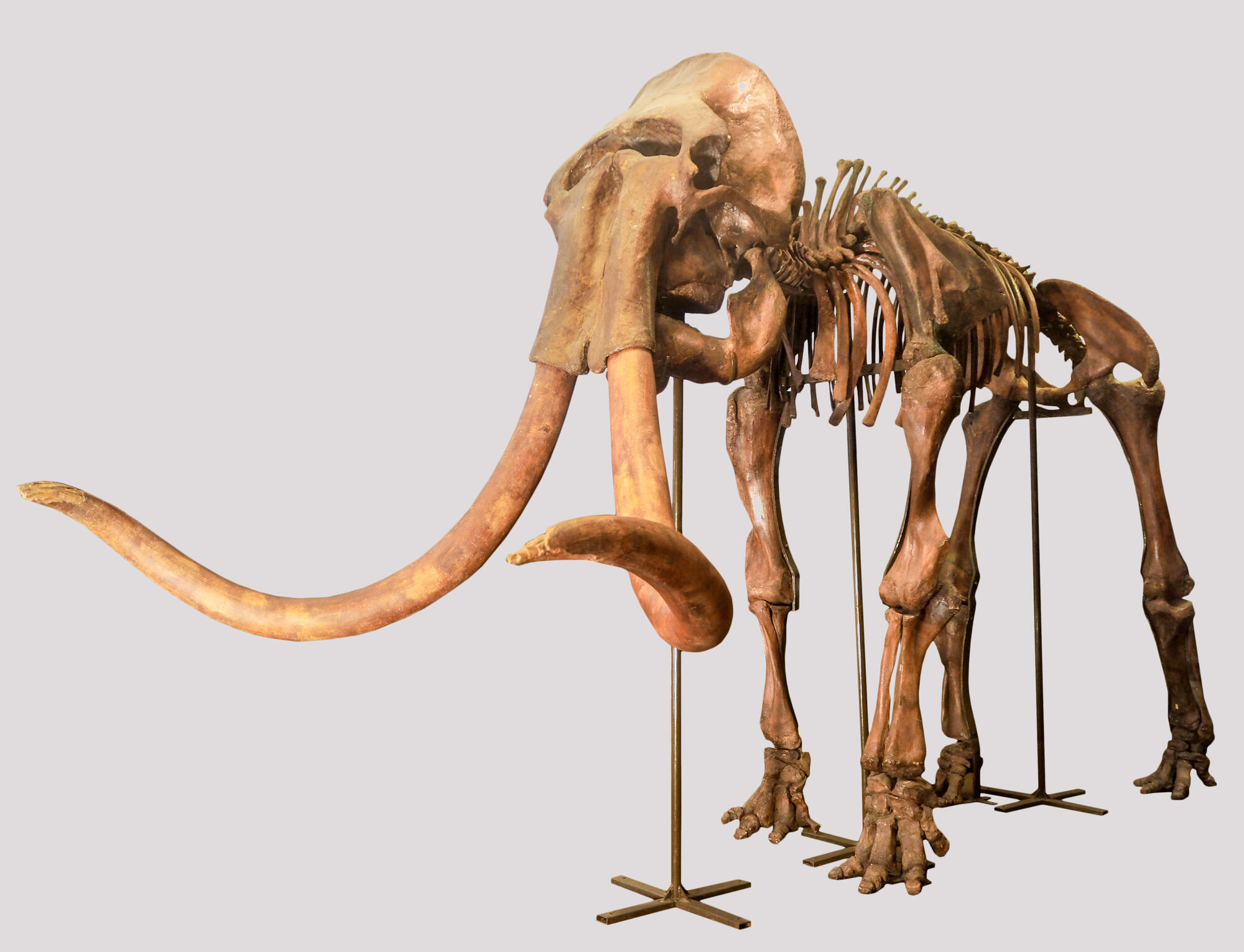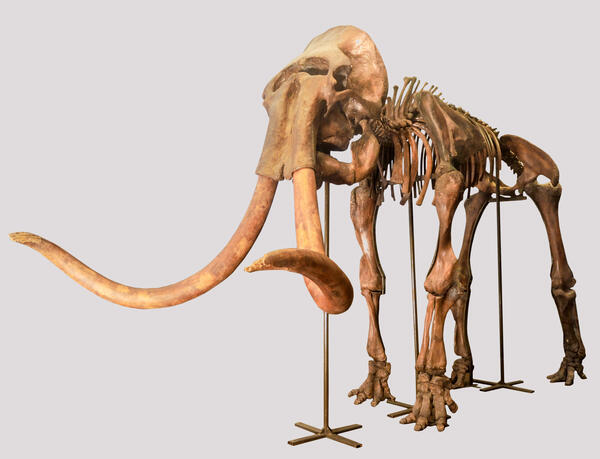The Smolensk Historical Museum is one of the few in Russia that can boast of such an unusual and rare exhibit as a genuine mammoth skeleton.
In 1999, the Smolensk customs prevented the illegal export of Siberian paleontological finds abroad through the territory of the Smolensk region. The skeleton of a mammoth, by decision of the Zadneprovsky District Court of Smolensk, was transferred to the Smolensk State Museum-Reserve in 2001.
This skeleton was discovered in the second half of the 1990s, in Siberia, in the so-called quaternary deposits. The Quaternary is a geological period that began 2.6 million years ago and continues to the present.
Mammoths are an extinct genus of mammals of the elephant family. They appeared about 4 million years ago and became extinct about 10 thousand years ago. The animals reached a height of 5.5 meters and a mass of 14-15 tons, and, thus, mammoths were twice as heavy as African elephants. Mammoths lived in North America, Europe and Asia and were herbivores. Their molars were well adapted to chewing on coarse vegetable food.
Mammoths and other large animals of the prehistoric period played an important role in the life of primitive people. In the extremely harsh climate of the ice ages, hunting was the only way of survival for our distant ancestors. Large animals served as a source of food for primitive hunters. Skins were used to make clothes and even make improvised dwellings. According to several scientists, hunters of the Upper Paleolithic played a significant or even decisive role in the extinction of mammoths. According to another point of view, the process of extinction began before the appearance of people in the corresponding territories and was caused by strong climatic changes.
Fragments of mammoth bones, tusks and teeth are also found in the Smolensk region. First, in the north-west of the region — in the Demidov district on the territory of the ‘Smolenskoe Poozerie’ national park.
In 1999, the Smolensk customs prevented the illegal export of Siberian paleontological finds abroad through the territory of the Smolensk region. The skeleton of a mammoth, by decision of the Zadneprovsky District Court of Smolensk, was transferred to the Smolensk State Museum-Reserve in 2001.
This skeleton was discovered in the second half of the 1990s, in Siberia, in the so-called quaternary deposits. The Quaternary is a geological period that began 2.6 million years ago and continues to the present.
Mammoths are an extinct genus of mammals of the elephant family. They appeared about 4 million years ago and became extinct about 10 thousand years ago. The animals reached a height of 5.5 meters and a mass of 14-15 tons, and, thus, mammoths were twice as heavy as African elephants. Mammoths lived in North America, Europe and Asia and were herbivores. Their molars were well adapted to chewing on coarse vegetable food.
Mammoths and other large animals of the prehistoric period played an important role in the life of primitive people. In the extremely harsh climate of the ice ages, hunting was the only way of survival for our distant ancestors. Large animals served as a source of food for primitive hunters. Skins were used to make clothes and even make improvised dwellings. According to several scientists, hunters of the Upper Paleolithic played a significant or even decisive role in the extinction of mammoths. According to another point of view, the process of extinction began before the appearance of people in the corresponding territories and was caused by strong climatic changes.
Fragments of mammoth bones, tusks and teeth are also found in the Smolensk region. First, in the north-west of the region — in the Demidov district on the territory of the ‘Smolenskoe Poozerie’ national park.


